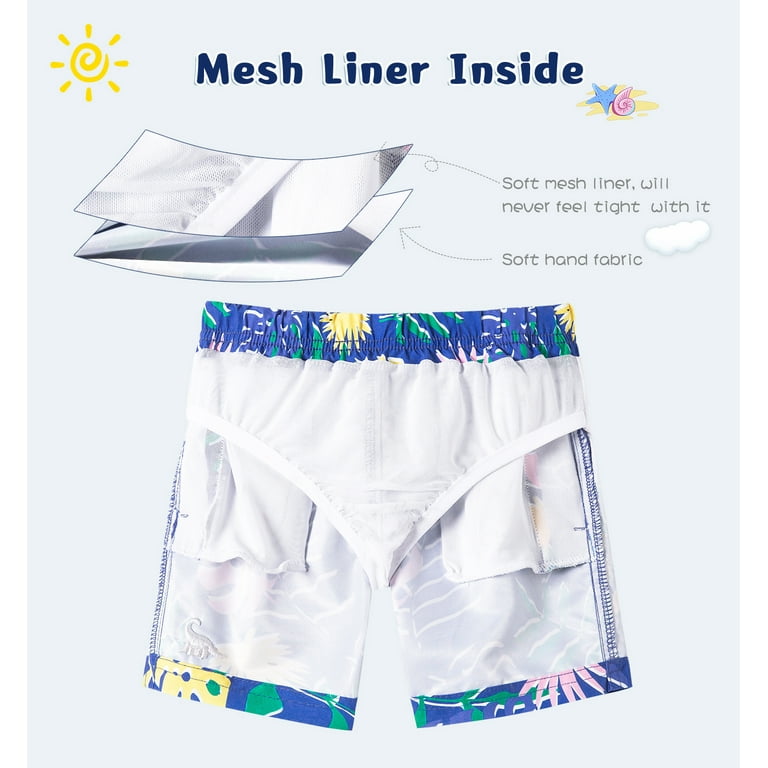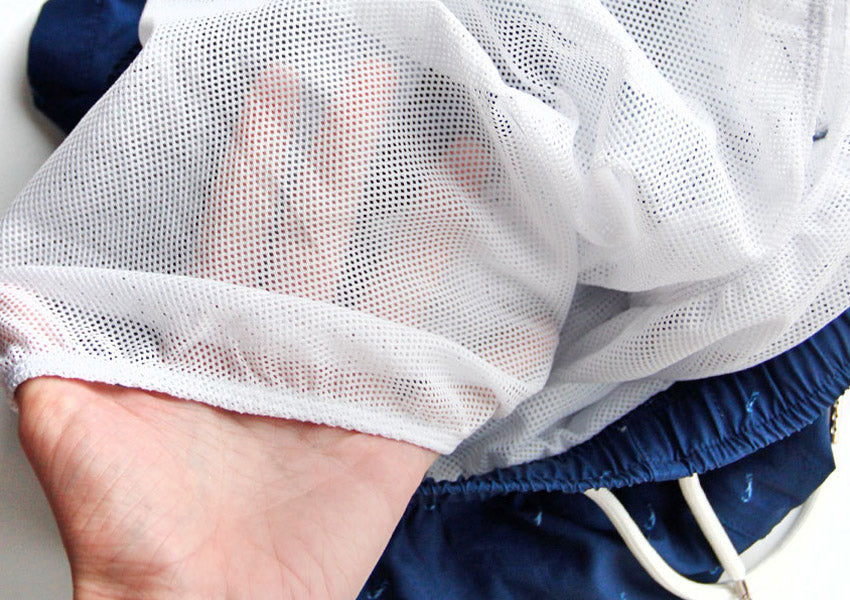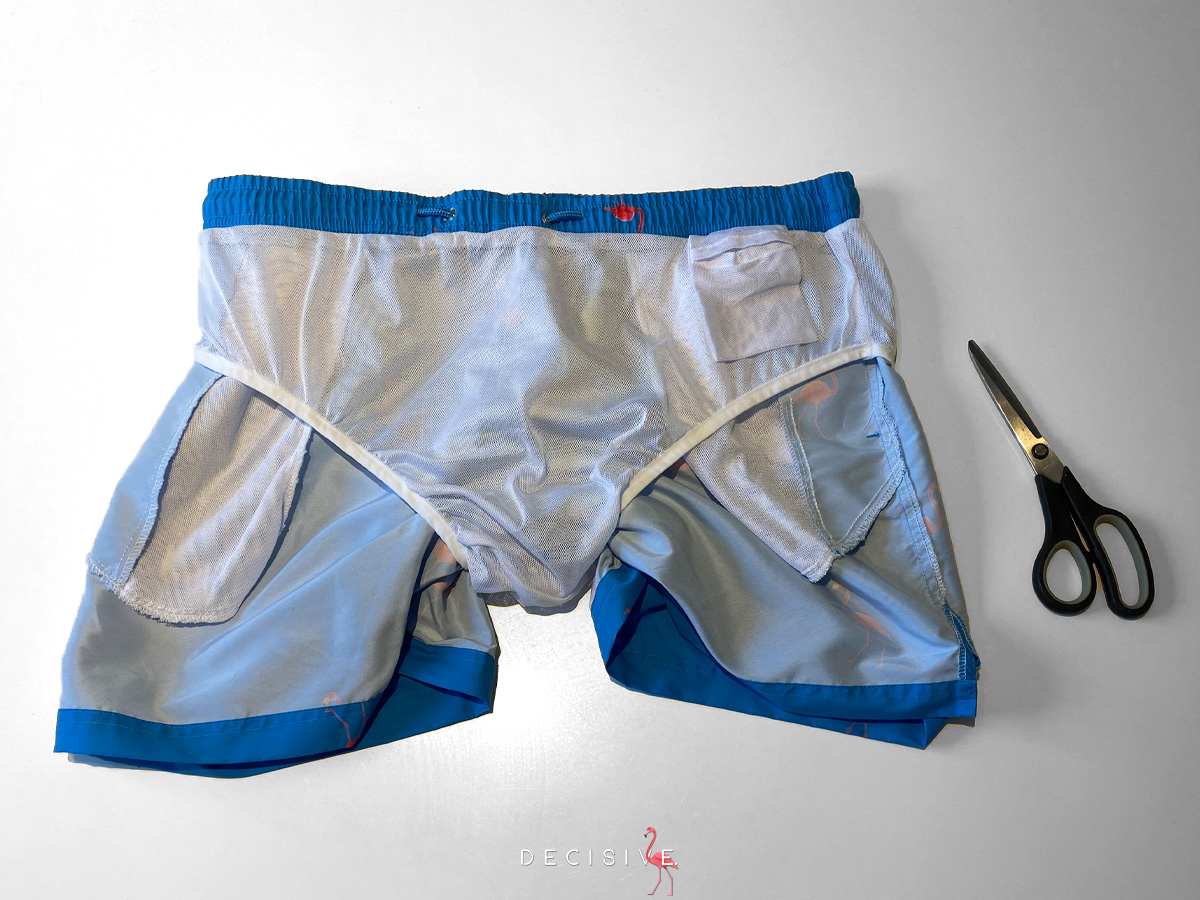Content Menu
● Introduction
● The Purpose of Net Linings
>> 1. Support and Coverage
>> 2. Prevention of Skin Irritation and Chafing
>> 3. Enhanced Ventilation
>> 4. Sand and Debris Management
>> 5. Modesty and Aesthetic Appeal
● The Fabric Matters: Understanding Swimwear Materials
● Visual Insights
● Common Concerns and Solutions
>> Choosing the Right Fit
>> Styles of Boys Swimwear
● The Evolution of Boys Swimwear
● Benefits Beyond Comfort
>> Safety Features
>> Eco-Friendly Options
● Related Questions and Answers
>> 1. Why do boys' swim trunks have net linings?
>> 2. Can the net lining be removed?
>> 3. Are there alternatives to net linings?
>> 4. How do I choose the right style of swim trunks?
>> 5. What maintenance tips should I follow for boys' swim trunks?
● Conclusion
● Citations:
Introduction
Swimwear plays a crucial role in summer activities, and for boys, swim trunks often come equipped with a unique feature: a mesh or net lining. While this design element may appear trivial at first glance, it serves several important purposes that enhance comfort, functionality, and safety during water activities. This article delves into the reasons behind the inclusion of net linings in boys' swimwear, supported by images and videos for a better understanding.

The Purpose of Net Linings
1. Support and Coverage
The primary function of the net lining is to provide support and coverage. Acting like built-in underwear, the netting ensures that sensitive areas are well-supported, especially during vigorous swimming activities. This feature is crucial for maintaining comfort and preventing any awkward situations.
2. Prevention of Skin Irritation and Chafing
One of the most significant benefits of the mesh lining is its ability to prevent skin irritation and chafing. When swim trunks get wet, the soft mesh acts as a barrier, protecting the skin from the rough outer fabric. This is particularly important for prolonged use in water.
3. Enhanced Ventilation
The mesh lining promotes air circulation, which helps in quick drying of the swim trunks. This feature not only adds to comfort but also reduces the risk of bacterial growth caused by prolonged moisture.
4. Sand and Debris Management
Playing on the beach often leads to sand getting trapped in swimwear. The net lining helps manage this issue by allowing sand and small debris to pass through, keeping the swim trunks clean and comfortable.
5. Modesty and Aesthetic Appeal
The net lining provides an additional layer of coverage, ensuring modesty even when the outer fabric becomes wet and clingy. This feature is particularly appreciated in public swimming areas.

The Fabric Matters: Understanding Swimwear Materials
The choice of fabric in boys' swimwear significantly impacts performance and comfort. Common materials include:
- Nylon: Lightweight and smooth, nylon is a popular choice for swimwear due to its quick-drying properties. However, it may not be as resistant to chlorine as other materials.
- Polyester: Known for its durability and resistance to chlorine and UV rays, polyester is often blended with other fabrics to enhance comfort and fit.
- Spandex (Elastane): This material provides excellent stretch and shape retention, making it ideal for snug-fitting swimwear like jammers or briefs.
- PBT (Polybutylene Terephthalate): A durable fabric that offers chlorine resistance, PBT is often used in competitive swimwear due to its excellent stretch and quick-drying properties.
Understanding these materials helps parents choose the best swimwear for their children based on their swimming habits and preferences.
Common Concerns and Solutions
While the net lining offers numerous benefits, some users find it uncomfortable. For those who experience irritation, opting for swim trunks with softer or alternative linings, such as compression shorts, can be a solution.
Choosing the Right Fit
When selecting boys' swimwear, fit is paramount. Swim trunks should be snug but not restrictive. A proper fit ensures that the net lining functions effectively without causing discomfort or chafing during active play or swimming sessions.
Styles of Boys Swimwear
Boys' swimwear comes in various styles:
- Trunks: These provide moderate coverage from upper thigh to waist and are popular for both training and leisure swimming.
- Jammers: Resembling cycling shorts, jammers extend from waist to just above the knee, offering maximum coverage while minimizing drag in water.
- Briefs: Often referred to as "Speedos," these provide minimal coverage but are favored for their low drag during competitive swimming.
- Aquashorts: These fall between jammers and trunks in length, providing good coverage while being suitable for training sessions or fitness swimming.
Each style has its own advantages depending on the swimmer's needs—whether for leisure activities or competitive events.

The Evolution of Boys Swimwear
The history of boys' swimwear reflects broader social changes regarding modesty and functionality:
- Early 20th Century: Initially dominated by woolen suits that absorbed water heavily, early designs were cumbersome and not suited for efficient swimming.
- Mid-20th Century: The introduction of synthetic materials like nylon revolutionized swimwear design by offering lighter options that dried quickly.
- Modern Era: Today's swimwear incorporates advanced fabrics designed for performance—resistant to chlorine damage while providing comfort through features like mesh linings.
This evolution illustrates how practical needs have driven innovation in boys' swimwear design over time.
Benefits Beyond Comfort
Safety Features
In addition to comfort, modern boys' swim trunks often incorporate safety features:
- UV Protection: Many fabrics now offer UV protection to shield young skin from harmful sun exposure during outdoor activities.
- Chlorine Resistance: Advanced materials help maintain color vibrancy while resisting degradation from pool chemicals.
Eco-Friendly Options
With growing awareness about environmental issues, many brands are now offering eco-friendly swimwear made from recycled materials. These options not only reduce waste but also provide high-quality performance comparable to traditional fabrics.
Related Questions and Answers
1. Why do boys' swim trunks have net linings?
- To provide support, prevent chafing, enhance ventilation, manage sand debris, and ensure modesty during water activities.
2. Can the net lining be removed?
- Yes, but it may compromise the functionality and comfort of the swim trunks if removed improperly.
3. Are there alternatives to net linings?
- Yes, some swim trunks come with compression linings or other soft materials designed for added comfort.
4. How do I choose the right style of swim trunks?
- Consider your child's swimming frequency; jammers are great for competitive swimmers while trunks offer versatility for both leisure and training.
5. What maintenance tips should I follow for boys' swim trunks?
- Rinse with fresh water after each use, avoid harsh detergents when washing, air dry them instead of using a dryer to prolong their lifespan.
Conclusion
The net lining in boys' swimwear is a thoughtful design feature that enhances comfort, functionality, safety, and performance. By understanding its purpose along with material choices and styles available today, parents can make informed decisions that ensure their children enjoy water activities comfortably and confidently.

Citations:
[1] https://maake.com/blogs/fabric/kids-swimwear-101
[2] https://www.proswimwear.co.uk/boys-swimwear-buying-guide
[3] https://www.simplyswim.com/blogs/blog/the-history-of-men-s-swimwear
[4] https://mosmannaustralia.com
[5] https://www.swimoutlet.com/blogs/guides/understanding-competition-swimsuit-fabrics
[6] https://en.wikipedia.org/wiki/History_of_swimwear





































